Produced by Netflix and now through its third season, Bojack Horseman is an animated sitcom that’s scored popular and critical success both for its surreal humor and its unflinching attitude toward serious issues like depression, substance abuse, and abortion. Its premise – anthropomorphic animals living alongside humans in an otherwise familiar contemporary world – provides a palatable entrance to its primary theme: the toxicity of nostalgia and celebrity culture.
It’s certainly not the first cartoon do to this – Venture Bros in particular comes to mind, but Adventure Time and Rick and Morty also do similar kinds of things – but it is the first mainstream cartoon to do it in this particular way. Nothing is without its antecedents, of course, and I’d like to suggest a possible avenue into what Bojack Horseman is doing by appealling to the work that’s probably had the most profound influence on the genre that Bojack inhabits. That would be the independent comic book series Cerebus the Aardvark, created by Dave Sim, which ran for three hundred issues between December 1977 and March 2004. It was, at the time, the longest-running continous narrative in human history, and its influence on the comic book medium, on the business model of independent creators, and on our culture as a whole, cannot be ignored – although it often is ignored, for various reasons.
Now, whether or not Bojack creator Raphael Bob-Waksberg has himself read Cerebus and was directly influenced by it, I don’t know. And while there are major differences between the two – Bojack is by no means a copy of Cerebus – there are also important structural throughlines that run from Cerebus into Bojack, which I think it would be useful to illuminate for a better understanding of what Bojack is trying to do and how.
- Funny Animals Being Serious
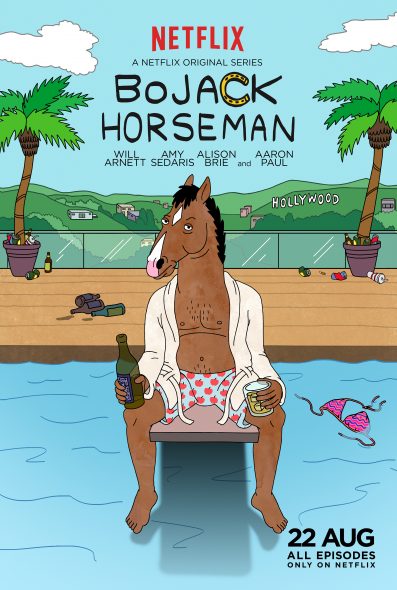
The major difference between the world in Bojack Horseman and the world in Cerebus isn’t just the time period – Bojack takes place in a contemporary setting, whereas Cerebus is set in a medieval-European-ish era, with magic and monsters. The real difference is that in the Bojack world, all animals are also people. There are humans too, but animal-people are thoroughly normal and treated just like different ethnic groups are treated in our world; there are cultural differences and so on, and comedians can get a lot of traction from highlighting them (Bojack himself tells that “A horse walks into a bar and the bartender says, “why the long face?” joke in one of his early standup sets), but generally everyone is regarded as equals regardless of species.
Cerebus, however, inhabits a world populated almost exclusively by humans. As a three foot tall anthropomorphic aardvark, he is unique (or almost unique – actually it is later discovered that there are two other aardvarks in the world, the sorcerer Suenteus Po and cult leader Cirin, but that’s a big deal – aardvarks seem to be anomalies that crop up once every few centuries, and Cerebus’s era is the first time in history that three aardvarks have been alive simultaneously), and people definitely treat him like a freak. Although he isn’t considered to be an animal, people seem to consider him to be very physically deformed, and most have no compunction about getting in his face about it. Fortunately, Cerebus knows his way around a sword.
But like Bojack, Cerebus has friends, enemies, and romantic relationships with humans, and that isn’t considered particularly weird; there are no intimations of bestiality or whatever. Animal people are people – not hybrid mutants or magical alien beings.
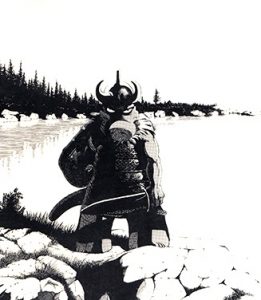 2. Alcoholism, Alienation, Delusions of Grandeur, and The Threat of Dying Alone
2. Alcoholism, Alienation, Delusions of Grandeur, and The Threat of Dying Alone
Another important parallel between Cerebus and Bojack is that they both have serious personality defects that become an important part of the overall story. Both characters are alcoholics, and both have anger management problems. Both crave power and recognition; both acquire power and recognition and still utterly fail to be satisfied. Both have extremely negative and often abusive relationships with others – particularly with women – and repeatedly sabotage themselves with regard to these relationships by treating other people horribly, and never realize until it’s too late that it isn’t the other people’s fault that their relationships failed.
These qualities make it deliberately difficult for the audience to completely sympathize with the characters. Some of us might certainly see parts of ourselves in them, but while we are given insight into Bojack’s and Cerebus’s reasons for thinking and behaving the way that they do, the narratives never let either character off the hook for acting like jerks all the time. Contrast this with, say, Seinfeld, where all the main characters are complete sociopaths, but none of them ever particularly suffer for the damage they do to others; even in the widely-loathed series finale when they’re all thrown into prison, they still remain largely oblivious and indifferent. In other words, both Cerebus and Bojack subscribe to a kind of solipsism-bordering-on-nihilism that’s emotional (rather than philosophical) in its origin. They both had traumatic childhoods (Bojack’s parents were emotionally distant and hypercritical, his only real role model being the famous racehorse Secretariat, whom he idolized; young Cerebus was ostracized because of his bizarre appearance, raised in a strict religious household and then sent away at a young age to study magic, but quit and became a mercenary instead) that created in them their mutual tragic flaw: they seek wealth and power in order to get adulation completely out of proportion with what they actually deserve. And watching as the universe routinely punishes them for failing to overcome this flaw constitutes a large amount of the series’ storytelling.
Both Cerebus and Bojack have, at some point, psychedelic, fourth wall-breaking experiences that were meant to show them the error of their ways. Bojack takes too many drugs and hallucinates an alternate world in which he was capable of expressing and accepting love, where he had married his friend Charlotte, had a child together, and lived happily ever after. Cerebus is taken to the moon by a mysterious entity called Dave; Dave shows Cerebus the biggest mistakes that Cerebus has made throughout his life, as well as possible futures in which Cerebus and the woman he loves, Jaka, end up together. All of these possible futures end in disaster because of Cerebus’s narcisism and selfishness, and when Cerebus returns to Earth, he never really manages to improve himself; similarly, following his trip, when Bojack tries to rekindle his relationship with Charlotte – who is now herself happily married with two children – he only succeeds in creating painful ruptures in Charlotte’s relationships with her husband and her daughter, and turning all of them against himself.
Both of these experiences also reference the famous 1953 Warner Bros cartoon “Duck Amuck,” in which Daffy Duck is harassed by a godlike animator, making it clear to the character that he’s a created character in a universe that isn’t particularly interested in whether he succeeds or fails in life – and may even prefer that he fails.
3. Celebrity Parodies
Both Cerebus and Bojack use parodies of famous people from history as parts of their world. In Bojack, these are typically American actors, as Bojack himself is a former sitcom star and lives and works in Hollywood – or rather, Hollywoo, as it called after the D in the Hollywood sign is stolen. Most of these celebrity appearances rely for their humor on our acquaintance with the actors juxtaposed with a world that includes talking animals – so we have celebrities voicing themselves on the show, like Naomi Watts (who co-stars in a movie with Bojack) and Daniel Radcliffe (who competes against him on a game show called “Hollywoo Stars and Celebrities: What Do They Know? Do They Know Things?? Let’s Find Out!” – a show created, incidentally, by author J.D. Salinger, who is discovered to have faked his own death to get away from all the publishing industry phonies. Salinger did not provide his own voice for the role), along with celebrity “animals” like Matthew Fox (a fox), Lance Bass (a fish), and Cameron Crowe (actually a raven).
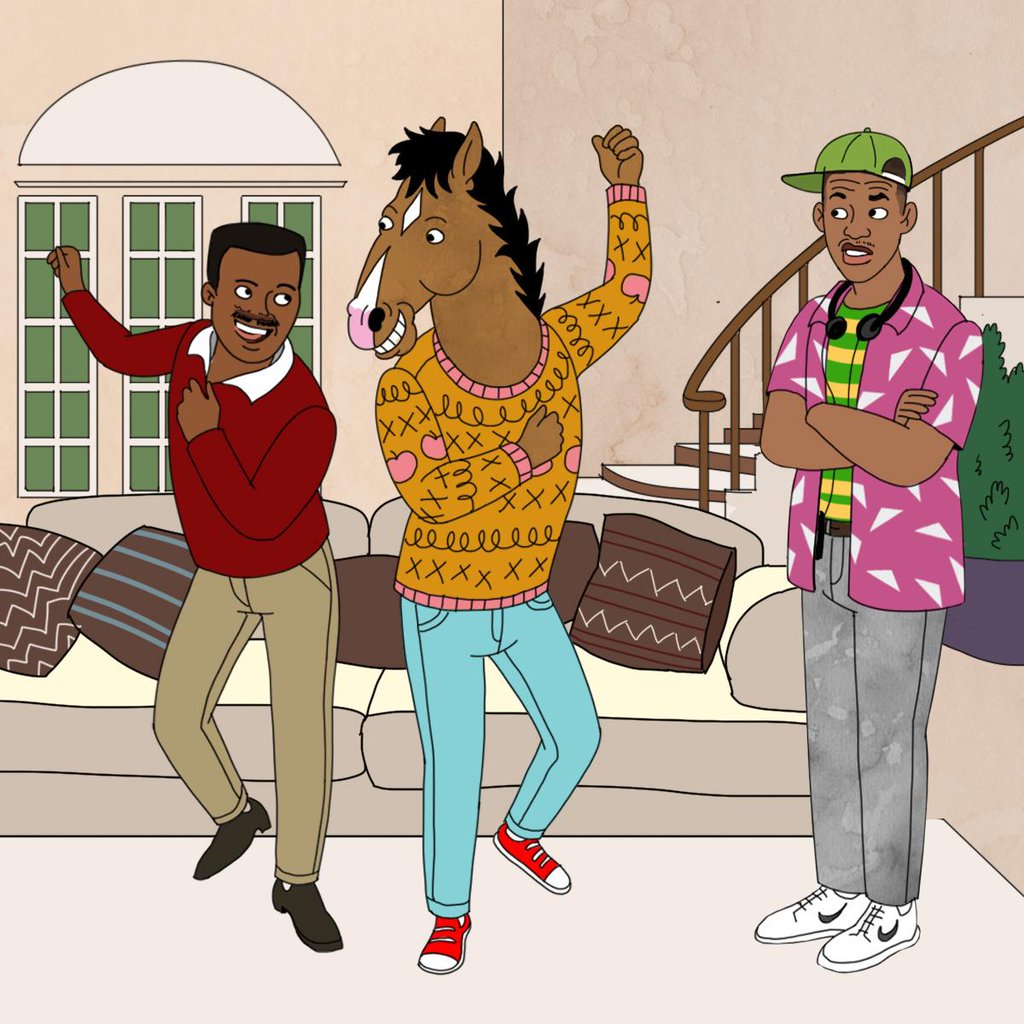
Because a large part of Bojack’s thematic nucleus is the detrimental effects of celebrity culture both on society as a whole and on celebrities as individuals, the appearance of real-life celebrities adds an important layer of – I don’t want to say realism but at least familiarity to the world portrayed in the show. It’s a convenient and effective shorthand for celebrities-as-archetype that makes it easier (and funnier) for the audience to become immersed in Bojack’s world and to give us a sense of his position in that world vis-à-vis his celebrity status. For instance, it’s obvious that Bojack is loosely inspired by Bob Saget in Full House, but Bojack’s life leading up to his being cast in his hit ‘90s sitcom Horsin’ Around as well as his career trajectory following its going off the air are very different than Bob Saget’s, and Bojack is by no means just an anthropomorphic horse version of Bob Saget. But having Bojack interacting with Henry Winkler or Noted Character Actress Margo Martindale creates the context for us to understand the sort of hierarchy that Bojack exists inside, because we already instinctively know where these celebrities fall within that architecture in the real world (and why do we know that? That’s part of what Bojack Horseman is about), we have a very strong sense of who Bojack is, why he feels the way he does about himself, and why strangers feel the way they do about him when they see him on the street. Everyone’s always like, “Hey, aren’t you the Horse from Horsin’ Around?”
Cerebus does a similar sort of thing, but in a different way. Incarnations of real people like Groucho Marx, Margaret Thatcher, Mick Jagger, Oscar Wilde (actually two Oscar Wildes) appear not as themselves, but as very thinly-veiled versions of themselves as they might be if they lived in Cerebus’s world. So Groucho appears as Lord Julius, leader of the city-state of Palnu and uncle of Cerebus’s love interest Jaka, satirizing the tendency of cynical politicians to deliberately obfuscate the relations of power within government in order to keep their own position safely apart from the shady dealings in which they’re inevitably involved. Late British Prime Minister Margaret Thatcher becomes, uh, Mrs. Thatcher, a matriarch in the Cirinist cult (who put Jaka, a dancer, under arrest after dancing is outlawed, Footloose-style, in all Cirinist-controlled territories) to make a point about relationships between gender and power within and between religious organizations. And so on.
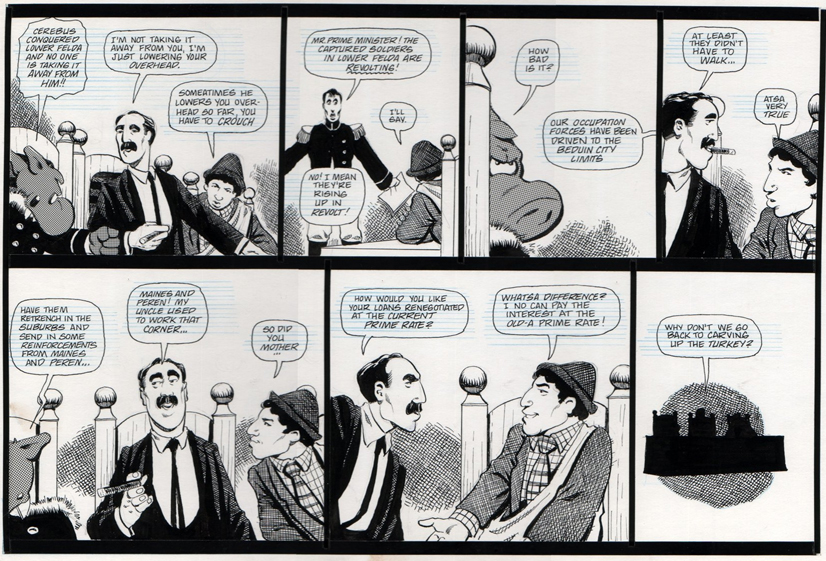
Cerebus’s use of well-known figures also provides a context for the audience to encounter the issues that Cerebus is interrogating without having to add an enormous amount of backstory for these characters. They function as archetypes; we know how they sound and how they think because we know who they are – even if they aren’t who they really are in the world of the narrative – and so we can instantly comprehend how these people would realistically behaves in these situations. They also have thematic weight in and of themselves; we understand what Margaret Thatcher conceptually represents, just as we understand what Mick Jagger and Ernest Hemingway represent, and so when we see them, we know what kind of ideas are going to be in play.
Importantly, Cerebus uses celebrity parodies as archetypes and not stereotypes. Lazy writers take one-dimensional stock characters like “The Jock” or “The Nerd” or “The Dumb Blonde” and play them straight, without giving their identities any complicating factors. Dave Sim has been called a lot of things, but lazy is not one of them. While the incarnations of celebrities in Cerebus provide a standpoint of familiarity for the audience, each of these characters is drawn with their own unique histories and internal lives. When, for instance, the Three Stooges are hybridized with the New Testament’s Three Wise Men, their tragic story (which only, in the end, features Cerebus as a very small part of their lives) is all the more resonant because we know that in a certain sense these were real people
4. Shift Toward Drama
Finally, both Bojack Horseman and Cerebus start out as seemingly shallow comedies – albeit satirical ones – only to pull back and reveal that not only do they possess incredible literary depth, but that they’re taking on subjects that would be too dark, too heartbreaking, for a more “realistic” artform. Cerebus, as a matter of fact, is so notable for this tonal shift that the trope itself – of a series that begin as light and soft but turn darker and more philosophical as they go on – has been dubbed Cerebus Syndrome.
In its first story arcs, Cerebus was the story of an aardvark warrior in a medieval-fantasy, sword-and-sorcery kind of world, basically a parodic hybrid of Marvel Comics’ Conan the Barbarian and Howard the Duck, both of which were at the height of their popularity in the late 1970s when Cerebus debuted. Soon after, though, it evolved into a complex political satire. Eventually it became most concerned with issues of gender politics and the mechanics of religious fanaticism – and in doing so alienated a whole lot of readers (or I should say ex-readers). But while it never stopped being funny, the humor did end up taking a back seat to the larger sociological and philosophical points that Sim was interested in at the time.
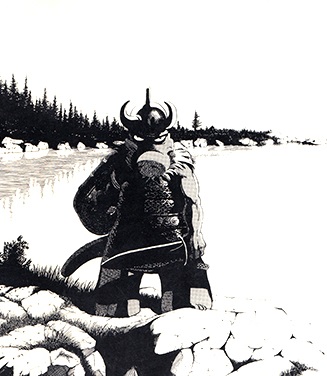
Bojack Horseman does something similar, but it’s interesting how the critical reactions to these tonal shifts were completely opposite for Bojack than they were for Cerebus. While early reception to Cerebus was extremely positive and there was universal acknowledgment that Sim was expanding the boundaries of what was possible with comics in general and indie comics in particular, a large portion of the audience soured considerably based on what was perceived to be a distinct misogynistic streak in Sim’s work and, later on, an interest in scriptural hermeneutics that was often accused of wandering into the region of near-schizophrenic hypergraphia. Bojack, on the other hand, was critically panned in the first half of its first season, dismissed as only “intermittently funny,” and “without any novelty or true insight.” But once the second half of the season became available, everybody changed their minds. With the season’s full arc now apparent, it became evident that the narrative depth of the show relied on darkening and problematizing the characters and scenarios that it originally set up; basically pulling back the spotlight further and further, causing the characters to cast longer and longer shadows for the writers to dive into relentlessly deep. It’s funny that a horse was the star of a terrible sitcom in the 90s, but it’s also horribly sad what that experience can do to the people (and “people”) involved. Betrayal, addiction, abuse, unattainable longing for a romanticized past, and the harrowing inevitability of death – on the surface, these don’t sound much like subjects of a animated sitcom starring talking animals. Yet Bojack uses its medium and structure as a…Trojan Horse…making its audience let their guard down so it can get inside them and hit them right where it hurts.
Like I said, I don’t know if Bojack Horseman was directly influenced by Cerebus. But it’s certain that Cerebus pioneered a lot of the narrative landscape that made Bojack not just successful, but possible. And I’m sure that Bojack is accomplishing the same thing for a new generation of creative people who are watching the show and going, “Holy crap, how does that work?”
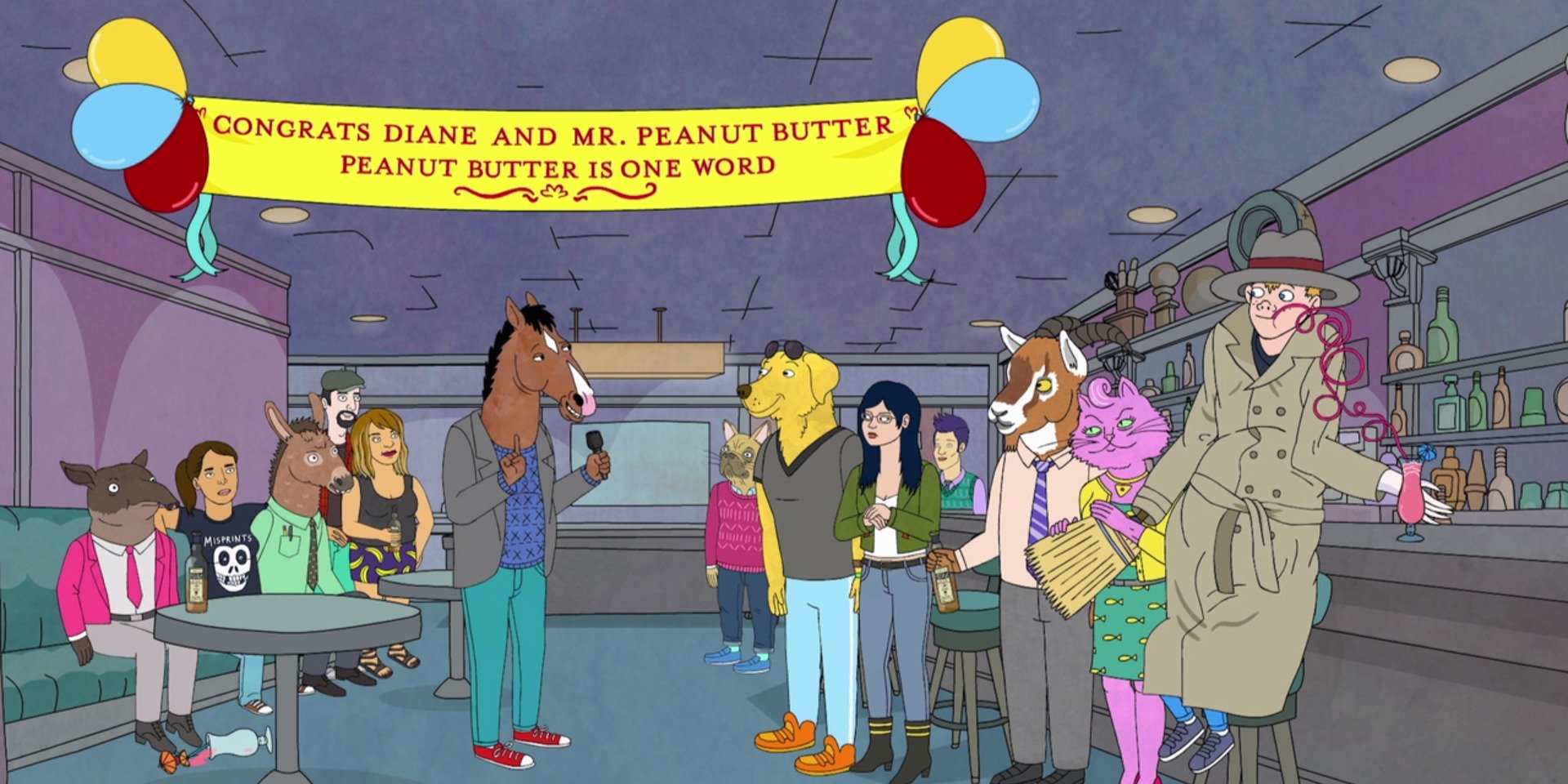
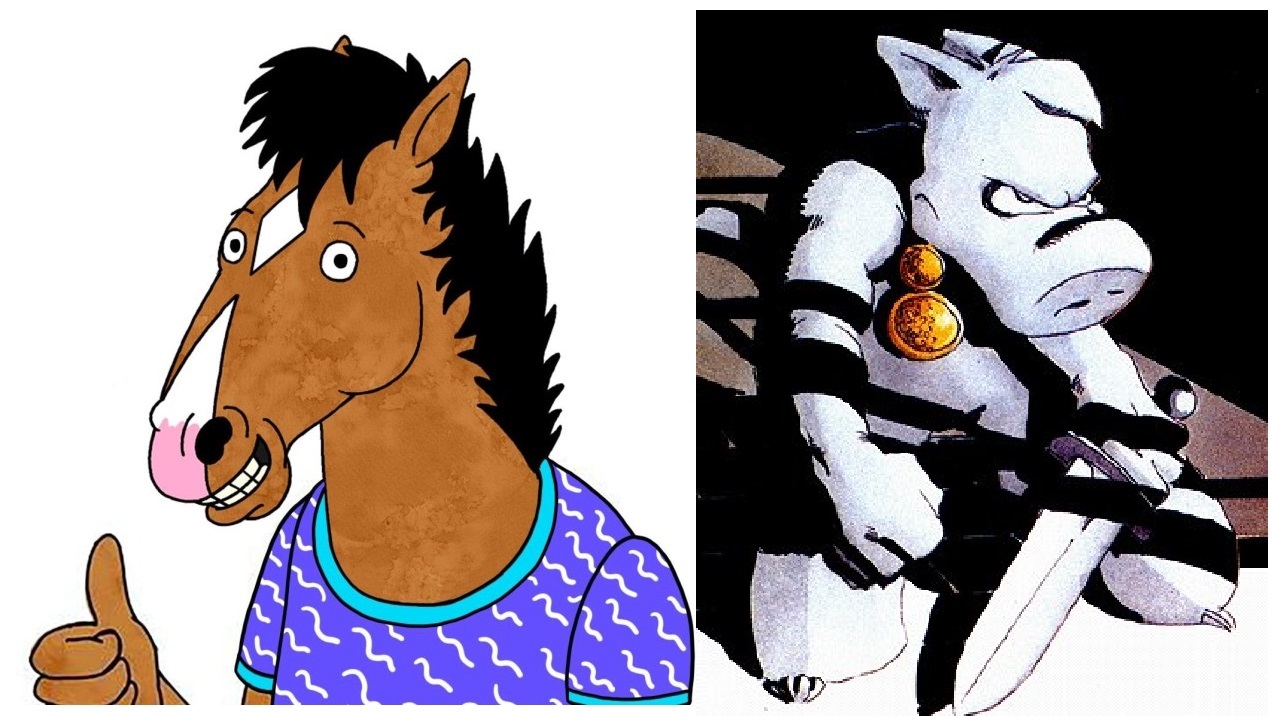
“It was, at the time, the longest-running continuous narrative in human history”
What took away that trophy since 2004? My best guess is “The Simpsons”, which has 28 seasons under its belt, but I’m not sure what properties something needs to satisfy to qualify as “continuous narrative.” Cerebus has the advantage that it had only a single writer for all of those 27 years; Simpsons can’t claim that.
Ah maybe it has been overtaken by “The Savage Dragon”, by Erik Larsen? 1986-2017 is indeed a longer period of time.
(but when did the current Savage Dragon narrative actually start? Perhaps only with the Image series, in 1993, in which case its not quite past Cerebus yet…)
Usagi Yojimbo, actually! Debuted in 1984, and has had the same single writer/artist continually since then. Cerebus ran for 27 years; Usagi has been running for 32 years and counting. Although Cerebus still beats Usagi in terms of number of issues published.
Sazae-san anyone? The manga ran from 1949 to 1979, the anime started off in 1969 and it’s still broadcasting as the Sunday staple in Japan. Sources tell it has an “unknown number of episodes”. The artist herself is long dead though.